Russian logic
Here’s a headline that might appear in a Chekhov play, but probably is a better fit for a Kurt Vonnegut novel:
“Wine will curb alcoholism, says Russian president”
The story is here.

Here’s a headline that might appear in a Chekhov play, but probably is a better fit for a Kurt Vonnegut novel:
“Wine will curb alcoholism, says Russian president”
The story is here.
Everyday: Strange as this might sound to wine novices, I always like to taste a little 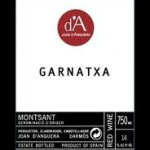 “dirt” in an Old World red. I’m not sure if that’s because it evokes terroir or just a basic connectivity to the vineyard, and trying to figure that kind of thing out takes some of the fun out of it. The Joan D’Anguera Montsant Garnatxa 2010 ($16) has that almost literal earthiness at the outset, followed by big dollops of grenache’s signature red berries and spice. It boasts the kind of firmness and stuffing that is hard to find at this price point, and a compelling finish. Roast chicken and grilled or roasted veggies were made for this “dirty” red.
“dirt” in an Old World red. I’m not sure if that’s because it evokes terroir or just a basic connectivity to the vineyard, and trying to figure that kind of thing out takes some of the fun out of it. The Joan D’Anguera Montsant Garnatxa 2010 ($16) has that almost literal earthiness at the outset, followed by big dollops of grenache’s signature red berries and spice. It boasts the kind of firmness and stuffing that is hard to find at this price point, and a compelling finish. Roast chicken and grilled or roasted veggies were made for this “dirty” red.
Occsasion: A merchant whom I respect mightily called the Nicolas Joly “Les Clos 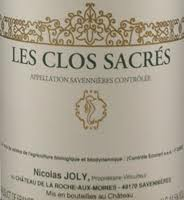 Sacres” Savennieres 2008 ($50) his favorite white of the year, and I’m not about to argue. It’s slightly oxidized, but a lot less so than most wines from N. Joly, and throws gorgeous stone-fruit and nut notes at the palate. The finish is almost endless, with refreshing acidity and taut flavors. Pretty sure I’ve never sampled a more persistent, focused chenin blanc. Endless are the food-pairing possibilities, from the grilled Tuscan chicken and peach entree we loved with it last night to most anything in between.
Sacres” Savennieres 2008 ($50) his favorite white of the year, and I’m not about to argue. It’s slightly oxidized, but a lot less so than most wines from N. Joly, and throws gorgeous stone-fruit and nut notes at the palate. The finish is almost endless, with refreshing acidity and taut flavors. Pretty sure I’ve never sampled a more persistent, focused chenin blanc. Endless are the food-pairing possibilities, from the grilled Tuscan chicken and peach entree we loved with it last night to most anything in between.
I left a dirty little secret out of my most recent Liquid Assets column, which was about how consumers who used to buy a lot of $20 to $50 wines had “traded down,” found great value in the $12 to $20 range and were likely to stay there. And how some wineries had declassified or renamed some formerly spendy juice to fit the lower tariffs of the post-bubble wine economy.
 As one of my favorite winemakers, Duxoup’s Andy Cutter (at left with wife Deb), said “People are talking about things “˜getting back to normal,’ when it really would be “˜getting back to abnormal.’ “
As one of my favorite winemakers, Duxoup’s Andy Cutter (at left with wife Deb), said “People are talking about things “˜getting back to normal,’ when it really would be “˜getting back to abnormal.’ “
But what I didn’t address directly, although I believe it was implied, is that a lot of wineries found themselves seriously backed up, with pallets full of older wine gathering warehouse dust as the newer vintages also got bottled. So they basically decided to “dump” the older vintages. Wholesalers were offering retailers and restaurateurs deals such as “buy five cases, get two [or even three] free.
In most cases, those savings were passed on to consumers. But sometimes only to a degree. And some of the wines weren’t a great bargain at any price, either because the winery’s quality has fallen off or the bottles had been sitting (or standing ““ not good) around too long in less than optimum conditions. (Another dirty little secret: Some wholesalers are not quality-conscious enough to keep their warehouses as cool as they should be.)
People are more value-conscious than ever, and that makes it easy to forget that just because an item, especially something as perishable as wine, if marked down mightily doesn’t mean it’s a great value. An $8 wine, even if it used to be $18, is worth exactly $0 if you don’t like it.
That is yet another reason that it’s absolutely, positively, indubitably essential to develop up-close-and-personal relationships with one or more wine-mongers. They’re the ones who can tell you when something has come in that fits your palate and wallet ““ and warn you about that large display that might look like a steal but will leave you bellowing “I wuz robbed.
 I also left out a category that falls into the “exception that proves the rule” department. Oregon wines that were priced from $20 to $50 have basically held tight on prices and done just fine. Credit the business world’s most tried and true axiom: We’re still showin’ the love for pinot noir (left), and almost all Oregon producers make relatively small amounts. A killer 2008 vintage certainly didn’t hurt.
I also left out a category that falls into the “exception that proves the rule” department. Oregon wines that were priced from $20 to $50 have basically held tight on prices and done just fine. Credit the business world’s most tried and true axiom: We’re still showin’ the love for pinot noir (left), and almost all Oregon producers make relatively small amounts. A killer 2008 vintage certainly didn’t hurt.
“People come in, and they’ll pay for that,” said Corey Burstad, owner of two Tournament Liquor stores. “Oregon has really niched itself in that price range. “¦ and people realize that it’s not worth it to slum in pinot.
In other, more forumalic words: High quality + Low quantity = Recession-proof wine.
Being a judge in wine competitions does not require a robe — although that would make spillage and errant spitting less egregiously obvious — but it does warrant at least a couple of hats, at least for a journalist.
That’s partly because I’m trying to discover some tasty bottles to recommend, which I did in this blog post at my day job. And I’m aiming to learn how experts (present company not included) assess wines. But mostly, I’m just attempting to do the job I’m assigned: figuring out what wines are medal-worthy. Here’s how that works:
 In the International Cold Climate Wine Competition, we were judging juice made from grapes that could withstand the winters in Minnesota, Vermont, northern Ohio, Canada, etc.
In the International Cold Climate Wine Competition, we were judging juice made from grapes that could withstand the winters in Minnesota, Vermont, northern Ohio, Canada, etc.
There were seven teams with three arbiters apiece, usually from different fields (media, merchants, restaurant folks, winemakers, etc.). I was teamed with a winemaker from Illinois and a local wholesale rep. Our palates differed fairly often, and when they varied wildly, I was usually the outlier, loving something they hated or vice versa.
One factor that took some getting used to was that the winemaker was putting tremendous weight on what’s called tipicity. We were told only what grape(s) were being used and the residual sugar content. He was very familiar with what these varieties tend to taste like, and had a strong notion of what they should taste like.
I was judging more or less in a vacuum, trying to approach the wines as a consumer who happens to be a professional (of sorts). My medal ratings basically work like this: a bronze is a wine I find quaffable; a silver is a wine I feel comfortable recommending, and a gold is a Wine of the Week-caliber offering.
At first, this inter-panel dichotomy was discomfiting, but eventually I decided that it was overall a good thing, at least from the competition’s standpoint. And we actually had a melding of the minds when one of the white wines smelled and tasted exactly like a New Zealand sauvignon blanc, cat-pee elements included. No medal there.
But that brings up another hurdle I face when assessing wines. There are certain styles that I don’t particularly care for: uber-creamy chardonnays, overly oaked malbecs and merlots, and the aforementioned sauv blancs. But I have to set my personal tastes aside, especially in my newspaper job, because a good bit of the audience loves those types of wines. So I feel comfortable in that venue recommending wines that are really good exemplars of that style.
Back to the competition: There’s a 20-point scale, and it’s not broken down the way I would. First off, there’s 2 points for appearance; cloudiness used to be a sign of problems with a wine, but last year I had a Wind Gap Trousseau Gris and Pinot Gris from both Wind Gap and Salinia that were absolutely delicious, so I’m not sure that should be part of the equation.
 Then there’s the actual consumption process breakdown: 6 points each for aroma and flavor and 3 for finish. Sorry, but the taste/texture/balance thing is worth more than half the appraisal in any wine experience, and even if you add in this contest’s final 3 points for “overall assessment,” it doesn’t get to the halfway mark.
Then there’s the actual consumption process breakdown: 6 points each for aroma and flavor and 3 for finish. Sorry, but the taste/texture/balance thing is worth more than half the appraisal in any wine experience, and even if you add in this contest’s final 3 points for “overall assessment,” it doesn’t get to the halfway mark.
I absolutely love smelling wines, and crave those almost spiritual experiences where I could simply sniff away and be camped out on Happy Lane. But for me the rubber meets the road on the palate, and the finish is at least as important as the aroma.
That’s my two cents 20 points, anyway.
 Everyday: If you buy just one bottle of the Samora Tejo 2010, you’ll almost certainly be remorseful. This is as delicious an $11 (often less) wine as I’ve encountered this year, and I wish there was about a case of it in the fridge. Let’s see, all it has going for it are wonderful aromas of white flowers and just-picked-off-the-tree lemon, lean and clean and refreshing flavors and just the right doses of acidity and minerality on the mid-palate and finish. I had never heard of the grape, fernão pires, and although I prefer its lesser-known name, Maria Gomes, I’m seeking more of it out. Bring on the shellfish and/or fresh greens.
Everyday: If you buy just one bottle of the Samora Tejo 2010, you’ll almost certainly be remorseful. This is as delicious an $11 (often less) wine as I’ve encountered this year, and I wish there was about a case of it in the fridge. Let’s see, all it has going for it are wonderful aromas of white flowers and just-picked-off-the-tree lemon, lean and clean and refreshing flavors and just the right doses of acidity and minerality on the mid-palate and finish. I had never heard of the grape, fernão pires, and although I prefer its lesser-known name, Maria Gomes, I’m seeking more of it out. Bring on the shellfish and/or fresh greens.
Occasion: I’ve sampled two straight vintages of the Spring Valley Uriah, and my only 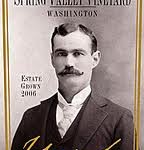 question is: Why does this red blend from Washington cost just $50? It’s rich and deep and endless and has amazing purity for a wine with four grapes. Those would be all the Bordeaux grapes except the most ballyhooed, cabernet sauvignon: lots of merlot and cabernet franc, with smaller doses of petit verdot and malbec. The chewy dark fruits and spot-on tannins make the Walla Walla wowser a dandy match for grilled or roasted livestock or game, or just a plain ol’ burger.
question is: Why does this red blend from Washington cost just $50? It’s rich and deep and endless and has amazing purity for a wine with four grapes. Those would be all the Bordeaux grapes except the most ballyhooed, cabernet sauvignon: lots of merlot and cabernet franc, with smaller doses of petit verdot and malbec. The chewy dark fruits and spot-on tannins make the Walla Walla wowser a dandy match for grilled or roasted livestock or game, or just a plain ol’ burger.
(This is one in a series of travel guides to wine regions by people whom I trust mightily. Reid has a great palate and appreciation for the good things in life.)
By Reid Plumbo
Paso Robles is going to be the next Napa. If you don’t believe me (Why should you? I’ve never been to Napa), then take it from a glass of mind-bending Paso zinfandel or syrah.
I’ve been traveling to the area extensively for business since 2006 and sneaking in tastes whenever customers would allow. Fortunately, this was often, and so I’ve been able to take in much of the area and learn how to best indulge while there.
Paso Robles is a small town of just over 30,000 people located almost exactly halfway between San Francisco and Los Angeles. The city is roughly 30 miles from a stretch of fantastically rugged Pacific coastline.
Getting there
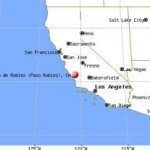 Getting to Paso Robles (pronounced “PAH-so ROW-blays” if you have some Spanish in you, “PAS-so ROW-bulls” if you don’t, and just “Paso” if you’re lazy) is best accomplished by flying to San Luis Obispo via Los Angeles or San Francisco.
Getting to Paso Robles (pronounced “PAH-so ROW-blays” if you have some Spanish in you, “PAS-so ROW-bulls” if you don’t, and just “Paso” if you’re lazy) is best accomplished by flying to San Luis Obispo via Los Angeles or San Francisco.
A fair warning: This does involve flying in a twin turboprop airplane. If you’re skittish about smaller airplanes, flying to San Jose and making the three-hour drive might be a better choice. You can admire the miles of cauliflower, lettuce and other vegetable fields along the way brought to you by the Dole company.
Because I’ve been primarily a business traveler, the Holiday Inn on the north side of town has always been my choice. You’ll never have the best stay of your life at a Holiday Inn, but you’ll never have the worst, either. Be forewarned that the cinnamon rolls have 500 calories a pop.
Further south in a slightly better location, you’ll find a brand new Marriott that offers a bit more plush accommodations and a hotel bar. If you’re in the mood for something a bit less “big box,” Google up the Paso Robles Inn. This historic spot boasts natural hot springs and gardens that hearken back to Paso Robles’ 19th century history. Although I’ve never stayed there, customers who have rave about the experience.
Getting rolling
One your ready, do a cannonball into Paso Robles dining and start with the best restaurant in the area ““ McPhee’s Grill in Templeton. Just a few exits south of the Paso Robles area, McPhee’s sits in a town right out of 1850. When you drive down Main Street, you feel a cowboy on a horse could draw up next to you at any moment.
By foot or by hoof, get seated at McPhee’s and start scanning a wine list which is brimming with local wines at reasonable mark-ups. Even though this would be a fantastic spot for a liquid dinner, don’t forget about the food, starting with the sweet potato fries. Once in a while, McPhee’s offers a bone-in ribeye that is insanely wonderful. Order this medium rare and ignore your friends when they tell you not to use your hands — pick up that bone and work it until the crème brulée shows up.
If you’re still not ready to go to bed, take the Spring Street exit on your way back north and follow it to Paso Robles’ town square. Lining this small park are an abundance of night spots, including a few wine bars. Paso’s wine bars offer surprisingly poor wine at high prices and are very skippable. Instead, hop over to the Crooked Kilt for ciders and local beers. Level 4 and the Downtown Brewery are more traditional nightclubs, louder and more dimly lit ““ perhaps an advantage depending on what your goals are for the evening.
Day Two
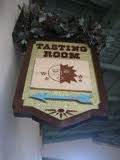 Start by visiting Turley straightaway. Usually they’ll be pouring recent releases of single-vineyard zinfandels from Paso and from Northern California in a new tasting room that is absolutely beautiful. Turley’s tasting fee is among the highest in Paso at $10, but it does include a complementary glass.
Start by visiting Turley straightaway. Usually they’ll be pouring recent releases of single-vineyard zinfandels from Paso and from Northern California in a new tasting room that is absolutely beautiful. Turley’s tasting fee is among the highest in Paso at $10, but it does include a complementary glass.
A brief aside: Start thinking how you’ll get wine home. Most places will ship, but if you buy two here and three there, that’s a lot of shipping charges. My favorite has always been to check it through with the airline. Now in the days of paying for checked luggage, it might cost you $25 to $50, but still worth it in my opinion. I’ve never had wine in a styro shipper become damaged at the hands of an airline. Just please do a good job taping!
Back at Turley, they sell shippers for a small fee. Not all places sell shippers, so buy here if you think there’s any chance you’ll want to check/ship wine home yourself. I usually get a 12 bottle shipper, but I’ve been known to go to 24 on occasion.
Take a right out of Turley and head up Vineyard Drive as it winds its way towards Hwy. 46W. Once you come to the intersection, start looking for Zin Alley signs and follow them to the Zin Alley tasting room. Once inside, you’ll undoubtedly meet Frank Nerelli, a third-generation Paso zinfandel producer. Ask him to tell you his story and you’ll get a great view of Paso politics and history.
Frank is making some of the best zinfandel in Paso Robles, and in a fundamentally different style. Where I feel like most in Paso are trying to exploit zinfandel’s power, he is showcasing its nuance ““ and doing it expertly. Budget at least an hour with Frank, and spend at least 30 of these minutes asking for seconds on the zinfandel port. Go ahead and buy a couple bottles now with the confidence you will not find a better one in the area. I promise to buy back any bottles you don’t want.
For lunch, head back to the town square and cruise the small bistros. Then head north on Spring Street and hang a left on 24th Street. This turns into Adelaida Drive and eventually connects to Vineyard Drive, where many wineries are located.
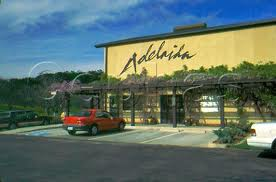 Enjoy the windy roads and amazing views, especially if you’ve got a car with good cornering. The Adelaida winery forever has a spot on my Paso rotation because of an epic 2004 roussanne. While they haven’t been able to replicate that wine in more recent vintages, l think they’re making some very good whites at good price points.
Enjoy the windy roads and amazing views, especially if you’ve got a car with good cornering. The Adelaida winery forever has a spot on my Paso rotation because of an epic 2004 roussanne. While they haven’t been able to replicate that wine in more recent vintages, l think they’re making some very good whites at good price points.
Continue down Adelaida Drive to Tablas Creek. Partially owned by the Perrin family of Chateau Beaucastel fame, Tablas Creek is making some very interesting blends from actual Beaucastel vines. Make sure to try their Rhone blends called Espirit Du Beaucastel.
Head back to your hotel and get cleaned up for dinner because you’re headed down to San Luis Obispo for a quick tour and another amazing meal. SLO has vigorously defended its downtown to keep out most chain outlets, which has resulted in a unique, and very Californian, downtown experience. Get to town 30 to 60 minutes before dinner so you have time for a walk.
For dinner, Luna Red on Monterey Street is your place. The tapas are the draw here; do not miss the duck confit crepes! The wine list is another reason to drive all the way to SLO. Bottles you can buy at Paso wineries for $40 are listed for $48 ““ the way it should be. This is a good spot to try some wines whose sites you’d like to visit on your trip.
Day 3
Time to dry out a little and head west to the Pacific. Get on Highway 46W, and “go until you can’t go no more. You’ll then be at the ocean and the famous Hwy. 1. From here, you  should drive north to Hearst Castle. George Randolph Hearst plundered and/or duplicated hundreds of treasures from Europe and created quite an estate.
should drive north to Hearst Castle. George Randolph Hearst plundered and/or duplicated hundreds of treasures from Europe and created quite an estate.
Head back east on Hwy. 46 and round out your day with two more tours. First hit Windward, which is making Monopole Pinot Noir. To complete the Burgundy impression, they have even hired a buxom young French woman.
And do not miss Booker, on Anderson Road just off Hwy. 46 on your way back to town. Booker, which is selling some amazing grenaches and syrahs at great price points, is only open Thursday to Saturday, so plan accordingly.
You’ve had a big day, but save a little charge in your battery for your last meal at Artisan. This is arguably Paso’s finest restaurant (McPhee’s is the argument), with price tags to match, but their food is unique.
(This is Part II of a profile of David Ramey. Part I is here.)
Whenever I get to hang with a vintner, I always like to ask what he or she thinks is the most important part of a winemaker’s job. Many say “choosing the picking date,” and one, Shafer’s Elias Fernandez, even talked about the cleanliness of the winery. But David Ramey is the first and only one who has cited the palate.
 “The most important thing is knowing what good wine tastes like,” he said. “A lot of kids have not tasted the great wines of the world. They approach it intellectually rather than sensually.
“The most important thing is knowing what good wine tastes like,” he said. “A lot of kids have not tasted the great wines of the world. They approach it intellectually rather than sensually.
It’s hard to say whether Ramey (left) is more of an intellect or a sensualist because he’s a lot of both. As winemaker at Matanzas Creek, Chalk Hill, Dominus and Rudd before devoting his full attention to Ramey Wine Cellars brings both to bear in the winery. A synopsis of his approach, culled from two interviews:
In general: no skin contact, oxidized juice, natural yeasts, aging sur lie, malolactic fermentation, total exclusion of oxygen once it’s wine, adequate sulfur dioxide in the bottle. “Some people don’t do malo. That’s cutting off your nose to spite your face. Malo happens naturally, particularly in the spring.
Chardonnay: “We live in a climate where we effortlessly achieve sugar and alcohol. So we whole-cluster-press to minimize tannins. We like a little voluptuousness in our wines  but don’t want them to be too heavy. “¦ A critic once told me “˜Kistler [chardonnay] tastes like a Botero, compared to Ramey, which tastes like a Modigliani. [left]’ We have a little more cut and definition and minerality.
but don’t want them to be too heavy. “¦ A critic once told me “˜Kistler [chardonnay] tastes like a Botero, compared to Ramey, which tastes like a Modigliani. [left]’ We have a little more cut and definition and minerality.
Red wines: “Cabernet is all about the tannins, not at all about the acidity. Tannins define everything. … “With pinot noir, acidity is where the rubber meets the road, the [male sexual organ] in the [female sexual organ]. … “I think we’re seeing a movement toward cool-weather syrah in California. I hope so because that’s where syrah should grow. You don’t get the smoked meat, green olive or cracked pepper in warm weather. You want it just a shade warmer than pinot-noir country. As you move north, it gets hotter in summer and colder in winter; you have a shorter growing season with hotter sun, so you have a problem getting mature, supple tannins.
He also doesn’t worry (much) about alcohol levels. “You can’t pick apart a wine with any one metric. But it’s like with an apricot; you know exactly what ripe tastes like and what overripe tastes like. “¦ You’re not gonna make a better wine because of a preconceived notion of alcohol. It’s like saying all shoes should be size 10.
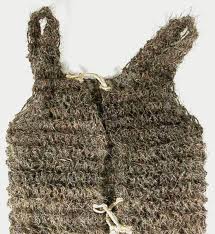 “Nature makes its own wine. I don’t own a filter. If it doesn’t taste good, that’s a lot more of a problem than alcohol; that’s a problem that the hairshirt people couldn’t come to grips with. There’s this whole English subculture that has been apologizing for bad Bordeaux vintages for so long that they don’t know a good one. They think wine has to hurt to be good.
“Nature makes its own wine. I don’t own a filter. If it doesn’t taste good, that’s a lot more of a problem than alcohol; that’s a problem that the hairshirt people couldn’t come to grips with. There’s this whole English subculture that has been apologizing for bad Bordeaux vintages for so long that they don’t know a good one. They think wine has to hurt to be good.
And finally here’s Ramey, a font of straightforward common sense, on that whole tasting thing:
“You don’t drink aromas. You don’t drink flavor descriptors. You drink texture. Focusing on aromas is like focusing on the perfume your wife is wearing when you’re making love with her. It’s not the main event, folks. Put it in your mouth. It’s tactile rather than a bunch of descriptors.
Everyday: I like albarino just fine, but if i could choose to have just one Spanish  white varietal for the rest of my days, I’d go with verdejo. It’s generally less expensive and more balanced than albarino. Exhibit A: the Naia Rueda Verdejo 2009 ($13), which has zippy fruit that glides through to a full-flavored, long finish. The aftertaste is almost better than the palate flavors. Try it with shrimp cocktail, chorizo-melon skewers or grilled fowl. By the way, this wine is the “second label” to the spectacular Naides Verdejo (around $30).
white varietal for the rest of my days, I’d go with verdejo. It’s generally less expensive and more balanced than albarino. Exhibit A: the Naia Rueda Verdejo 2009 ($13), which has zippy fruit that glides through to a full-flavored, long finish. The aftertaste is almost better than the palate flavors. Try it with shrimp cocktail, chorizo-melon skewers or grilled fowl. By the way, this wine is the “second label” to the spectacular Naides Verdejo (around $30).
Occasion: It’s hard to imagine that any established Old World country is trying to catch 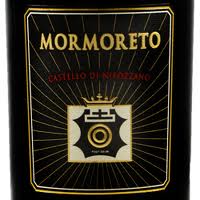 up with California in making any type of wine, but that’s the case with cabernet-based Bordeaux blends. But the Frescobaldi Mormoreto 2007 ($70) matches up with any Cali cab or blend in that price range. It’s got full-flavored red and black fruits, touches of herb and earth and a silky, sexy finish. This is a refined and elegant red that will sing an aria with any great cut of beef. Of course, that should be a bistecca Fiorentina if you’re into that grows together-goes together thing.
up with California in making any type of wine, but that’s the case with cabernet-based Bordeaux blends. But the Frescobaldi Mormoreto 2007 ($70) matches up with any Cali cab or blend in that price range. It’s got full-flavored red and black fruits, touches of herb and earth and a silky, sexy finish. This is a refined and elegant red that will sing an aria with any great cut of beef. Of course, that should be a bistecca Fiorentina if you’re into that grows together-goes together thing.
Today’s best wine blog post from a website about chemistry is here.
Includes many great comments, starting with “Does the direction of swirling to give results one way or the other depend on whether you’re in the northern or southern hemispheres? I assume that if your[sic] at the equator, you just splash it on your shirt.”